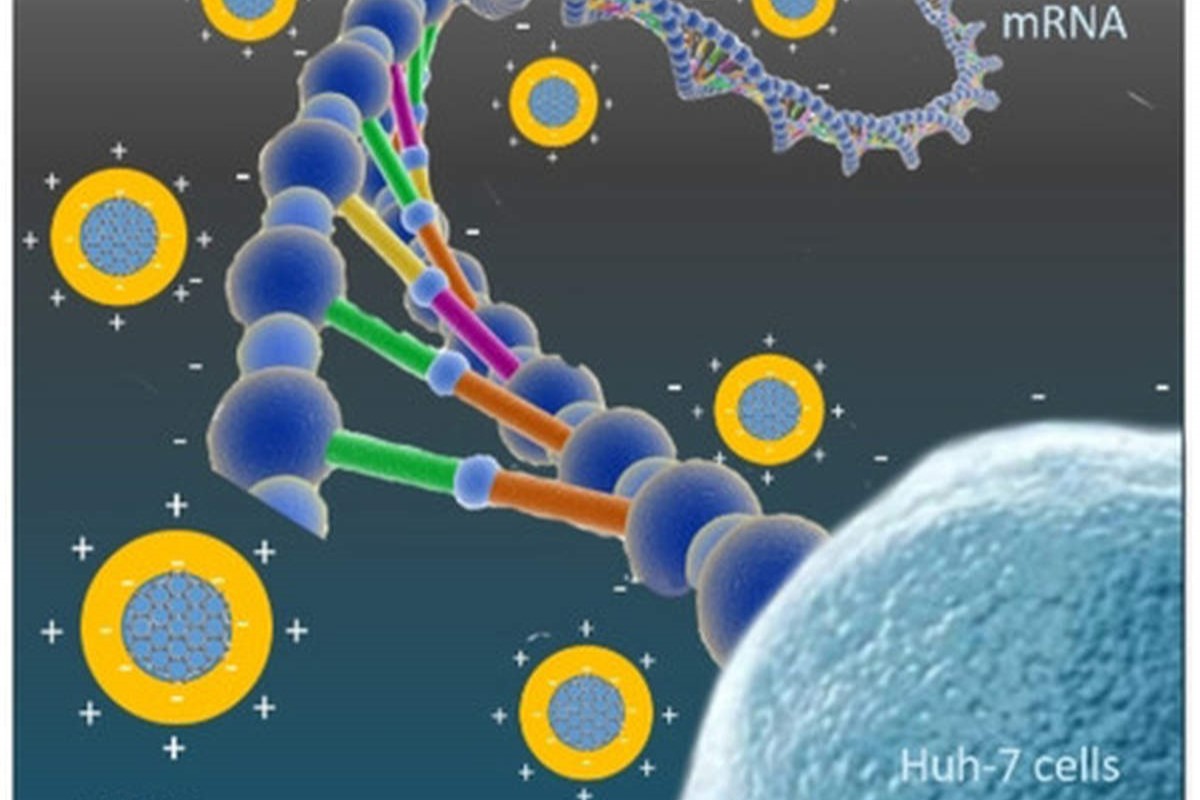An unnoticed scientific paper from 2021 demonstrates that mRNA distribution based on graphene quantum dots (GQDs) can respond to various stimuli such as ultrasound, magnetic fields or light.
Published by Chemistry Europe* by scientists from several countries, this April 7, 2021 article notes that there is growing interest in the use of therapeutic messenger RNA, combined with drug delivery systems. For, while naked mRNA, i.e. unreformulated mRNA, is unable to cross the cell membrane, write the article’s authors, the situation is quite different when modified graphene quantum dots (GQDs), i.e. semiconducting nanocrystals, are used.
A promising class of drugs (according to the authors)
“In recent years, graphene quantum dots (GQDs) have emerged as an attractive platform for biological applications, including biosensing, biomedical imaging and drug delivery,” say the scientists. “This is due to the various desirable attributes of GQDs: dispersibility, good biocompatibility, large surface area, colloidal stability and tunable surface structure. In addition, GQDs are able to respond to physical stimuli, such as magnetic fields, ultrasound and light. These unique response characteristics enable precise control of drug release.” This makes messenger RNA (mRNA)-based therapies a promising class of drugs.
Sorcerer’s apprentices on the prowl
It’s true that we can and must provide better care for the sick by using increasingly sophisticated technology. But also increasingly worrying if it were to fall into the hands of mad scientists or sorcerers’ apprentices, always on the lookout. It would then be possible to act remotely on individuals, perhaps to cure them, perhaps to subjugate them. Science without conscience…
According to Dr. Jean-Marc Sabatier, this is an approach with enormous and quite exceptional potential for vectoring various types of molecules into cells, such as so-called “vaccine” mRNAs. In this case, it would theoretically be possible to dispense with the presence of lipid nanoparticles, which protect mRNAs from degradation and reduce the innate immune response (hyper-inflammation induced by these mRNAs). At the same time, lipid nanoparticles promote mRNA penetration into cells, where they are translated into the corresponding proteins by the cellular machinery (ribosomes).
Nevertheless, Dr. Sabatier considers this approach frightening because it is extremely dangerous and uncontrollable for the human organism, due to the many adverse effects potentially associated with their use (due to mRNA and/or GQD semiconductor nanocrystals which possess unique and unexpected electronic / optoelectronic properties). Thanks to their small size (less than 100 nanometers, but generally between 2 and 10 nanometers), these graphene quantum dots (GQDs) are subject to uncontrolled quantum mechanical effects, particularly within a living organism whose functioning is particularly complex and sensitive to “external” elements. For this researcher, this is an experimental approach in uncharted territory, just as dangerous for human health as the self-amplifying and trans-amplifying mRNAs currently being developed (without any hindsight) by numerous pharmaceutical companies, notably against SARS-CoV-2. The greatest danger also comes from the possible manipulation – benevolent or malevolent – of the molecules associated with GQDs, by various external physical stimuli.
*Founded in 1995, Chemistry Europe is an association of 16 chemical societies from 15 European countries. It publishes a series of high-quality scientific journals in the field of chemistry, covering a wide range of disciplines.
Un article effrayant (2021) :
"Distribution d'ARNm basée sur des points quantiques de graphène (GQD)".
Ces GQD modifiés délivrent un ARNm intact aux cellules.
Les GQD peuvent répondre à divers stimulis (ex : champ magnétique, ultrasons, lumière).#arnmhttps://t.co/sxA0GqX7aw
— Sabatier Jean-Marc (@SabatierJeanMa1) February 5, 2024

